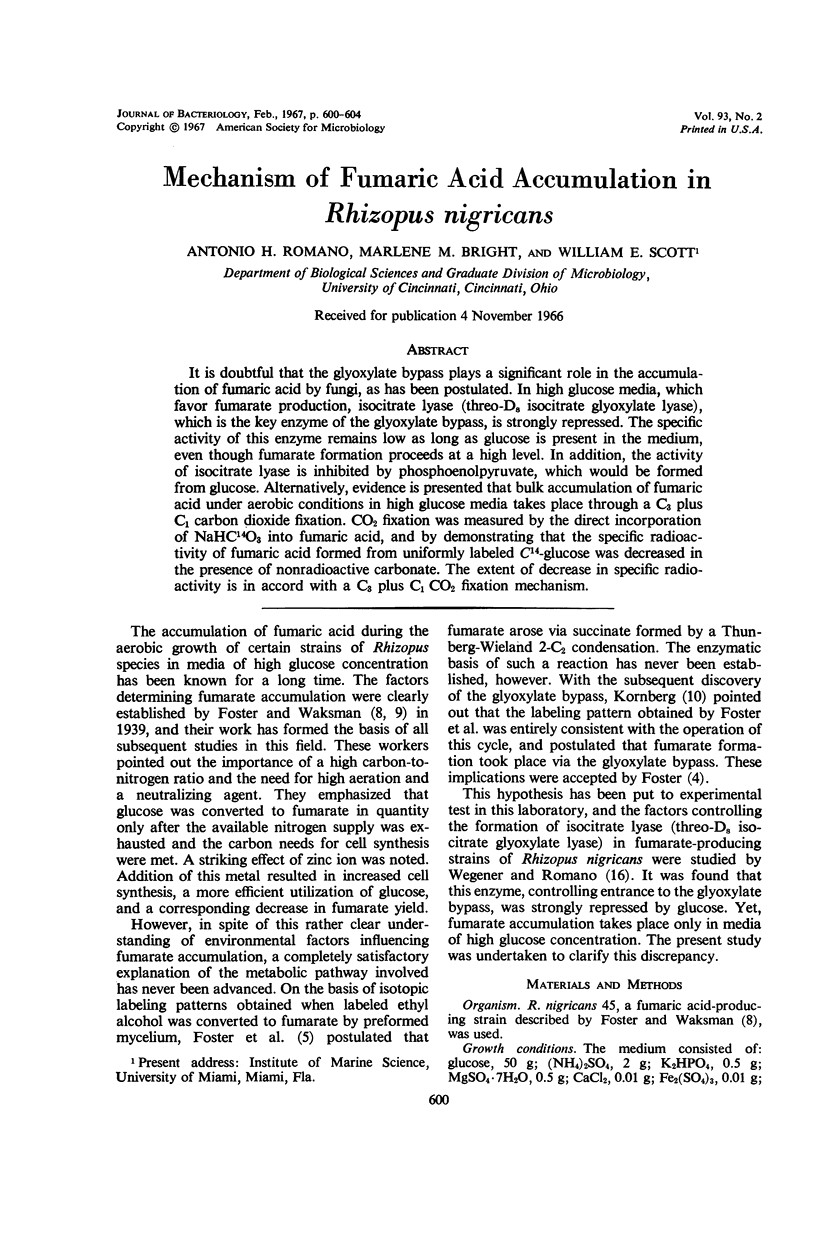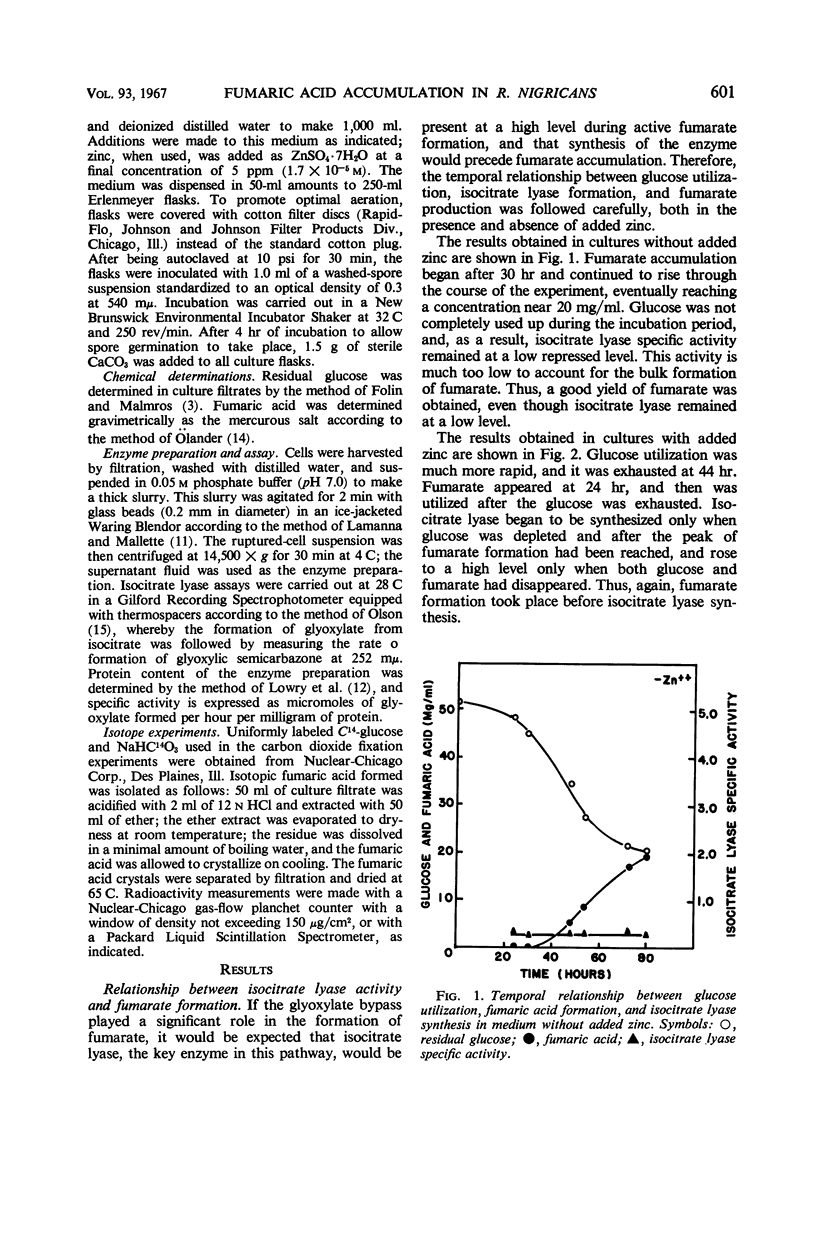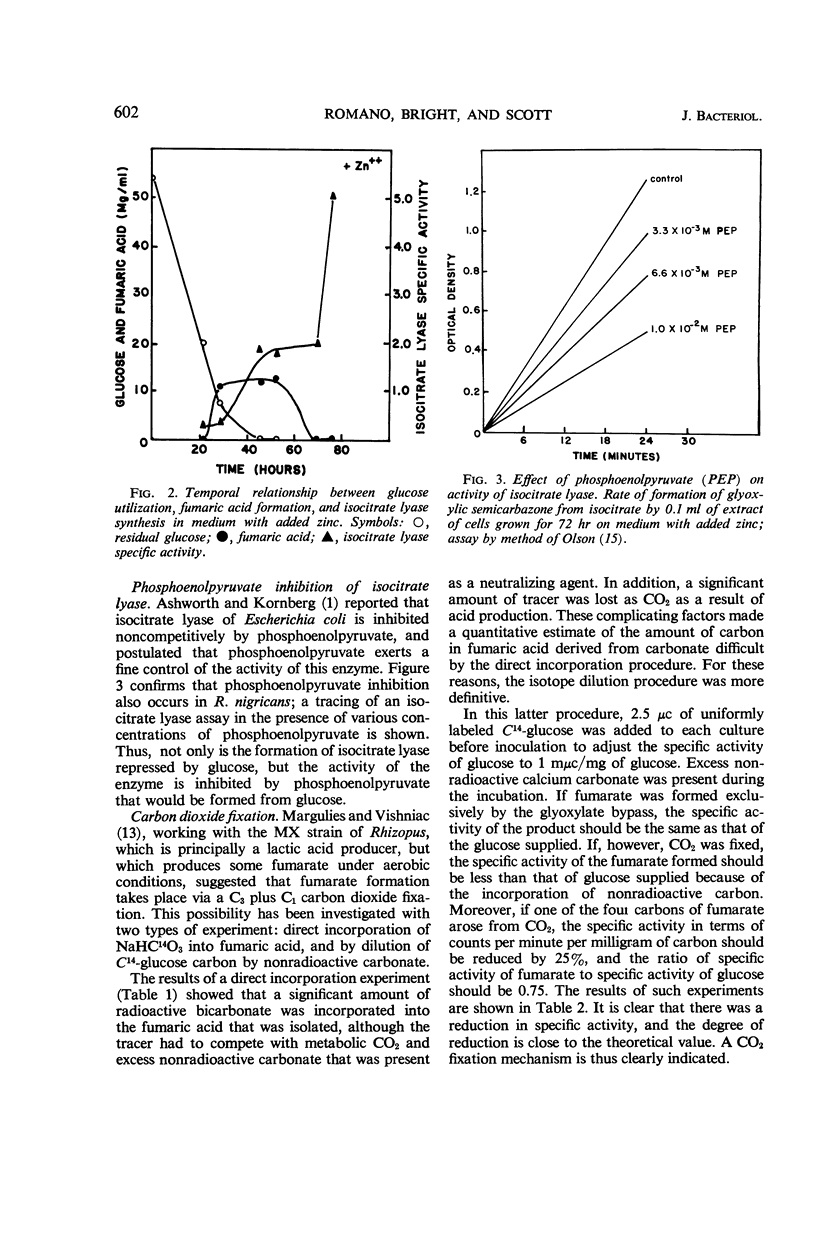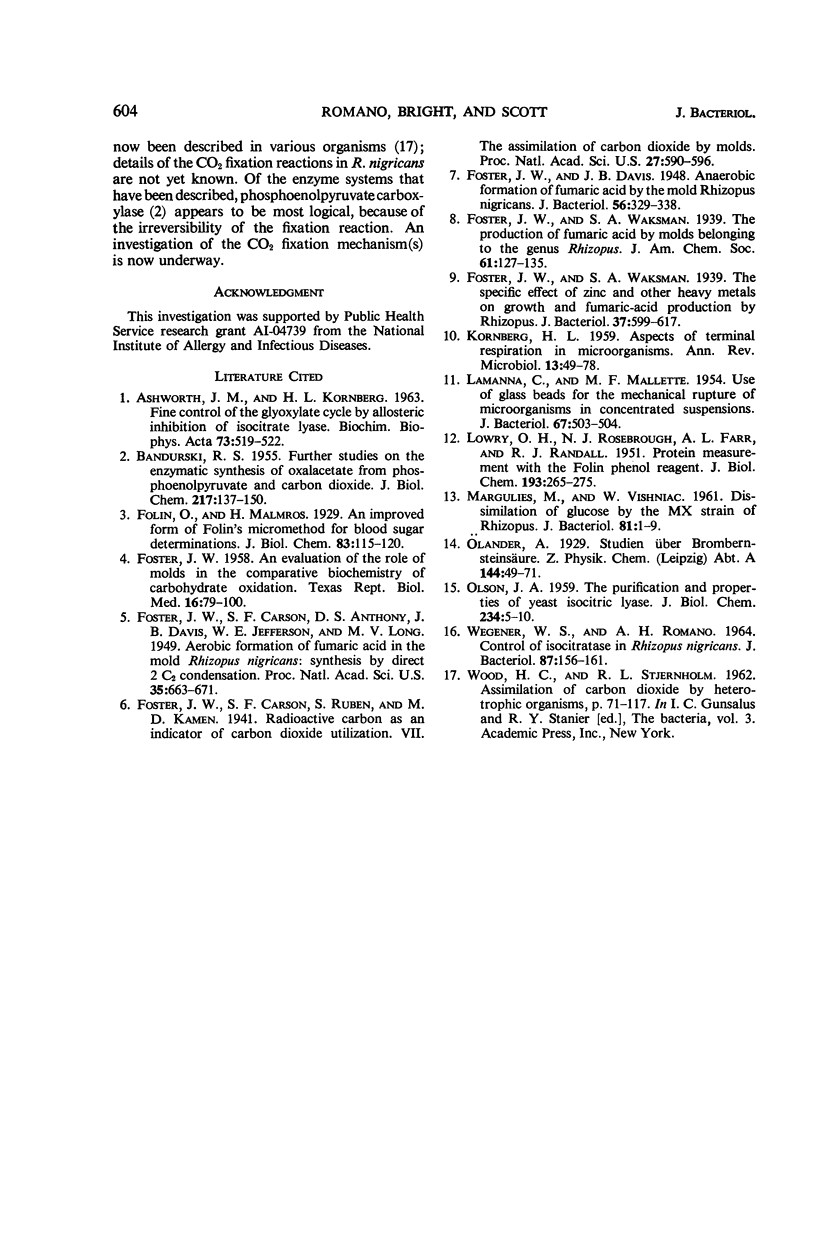Abstract
It is doubtful that the glyoxylate bypass plays a significant role in the accumulation of fumaric acid by fungi, as has been postulated. In high glucose media, which favor fumarate production, isocitrate lyase (threo-Ds isocitrate glyoxylate lyase), which is the key enzyme of the glyoxylate bypass, is strongly repressed. The specific activity of this enzyme remains low as long as glucose is present in the medium, even though fumarate formation proceeds at a high level. In addition, the activity of isocitrate lyase is inhibited by phosphoenolpyruvate, which would be formed from glucose. Alternatively, evidence is presented that bulk accumulation of fumaric acid under aerobic conditions in high glucose media takes place through a C3 plus C1 carbon dioxide fixation. CO2 fixation was measured by the direct incorporation of NaHC14O3 into fumaric acid, and by demonstrating that the specific radioactivity of fumaric acid formed from uniformly labeled C14-glucose was decreased in the presence of nonradioactive carbonate. The extent of decrease in specific radioactivity is in accord with a C3 plus C1 CO2 fixation mechanism.
Full text
PDF




Selected References
These references are in PubMed. This may not be the complete list of references from this article.
- ASHWORTH J. M., KORNBERG H. L. FINE CONTROL OF THE GLYOXYLATE CYCLE BY ALLOSTERIC INHIBITION OF ISOCITRATE LYASE. Biochim Biophys Acta. 1963 Jul 9;73:519–522. doi: 10.1016/0006-3002(63)90457-8. [DOI] [PubMed] [Google Scholar]
- BANDURSKI R. S. Further studies on the enzymatic synthesis of oxalacetate from phosphorylenolpyruvate and carbon dioxide. J Biol Chem. 1955 Nov;217(1):137–150. [PubMed] [Google Scholar]
- FOSTER J. W. An evaluation of the role of molds in the comparative biochemistry of carbohydrate oxidation. Tex Rep Biol Med. 1958;16(1):79–100. [PubMed] [Google Scholar]
- FOSTER J. W., CARSON S. F. Aerobic formation of fumaric acid in the mold Rhizopus nigricans, synthesis by direct C2 condensation. Proc Natl Acad Sci U S A. 1949 Dec;35(12):663–672. doi: 10.1073/pnas.35.12.663. [DOI] [PMC free article] [PubMed] [Google Scholar]
- Foster J. W., Carson S. F., Ruben S., Kamen M. D. Radioactive Carbon as an Indicator of Carbon Dioxide Utilization: VII. The Assimilation of Carbon Dioxide by Molds. Proc Natl Acad Sci U S A. 1941 Dec 15;27(12):590–596. doi: 10.1073/pnas.27.12.590. [DOI] [PMC free article] [PubMed] [Google Scholar]
- Foster J. W., Davis J. B. Anaerobic Formation of Fumaric Acid by the Mold Rhizopus nigricans. J Bacteriol. 1948 Sep;56(3):329–338. doi: 10.1128/jb.56.3.329-338.1948. [DOI] [PMC free article] [PubMed] [Google Scholar]
- Foster J. W., Waksman S. A. The Specific Effect of Zinc and Other Heavy Metals on the Growth and Nutrition of Rhizopus. J Bacteriol. 1939 Jun;37(6):599–617. doi: 10.1128/jb.37.6.599-617.1939. [DOI] [PMC free article] [PubMed] [Google Scholar]
- LAMANNA C., MALLETTE M. F. Use of glass beads for the mechanical rupture of microorganisms in concentrated suspensions. J Bacteriol. 1954 Apr;67(4):503–504. doi: 10.1128/jb.67.4.503-504.1954. [DOI] [PMC free article] [PubMed] [Google Scholar]
- LOWRY O. H., ROSEBROUGH N. J., FARR A. L., RANDALL R. J. Protein measurement with the Folin phenol reagent. J Biol Chem. 1951 Nov;193(1):265–275. [PubMed] [Google Scholar]
- MARGULIES M., VISHNIAC W. Dissimilation of glucose by the MX strain of Rhizopus. J Bacteriol. 1961 Jan;81:1–9. doi: 10.1128/jb.81.1.1-9.1961. [DOI] [PMC free article] [PubMed] [Google Scholar]
- OLSON J. A. The purification and properties of yeast isocitric lyase. J Biol Chem. 1959 Jan;234(1):5–10. [PubMed] [Google Scholar]
- WEGENER W. S., ROMANO A. H. CONTROL OF ISOCITRATASE FORMATION IN RHIZOPUS NIGRICANS. J Bacteriol. 1964 Jan;87:156–161. doi: 10.1128/jb.87.1.156-161.1964. [DOI] [PMC free article] [PubMed] [Google Scholar]


